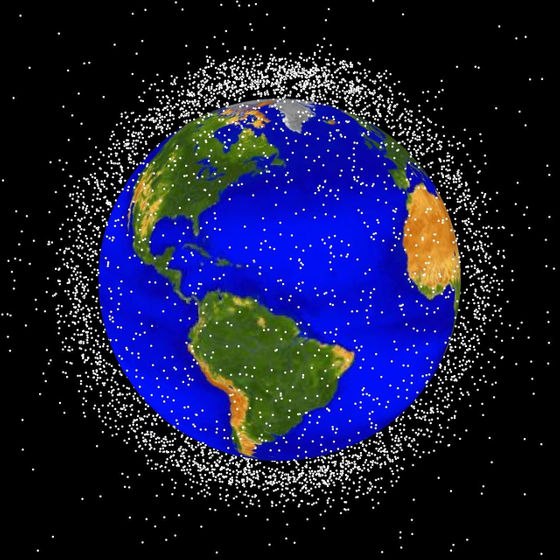It turns out that 'light pollution' produced by artificial satellites is affecting astronomical observations all over the earth

In the past, if you looked up at the night sky, you could see countless beautiful stars, but in recent years it has become difficult to see the stars with the naked eye due to
proliferation of space objects is a rapidly increasing source of artificial night sky brightness | Monthly Notices of the Royal Astronomical Society: Letters | Oxford Academic
https://academic.oup.com/mnrasl/advance-article/doi/10.1093/mnrasl/slab030/6188393
Satellites contribute significant light pollution to night skies | The Royal Astronomical Society
https://ras.ac.uk/news-and-press/news/satellites-contribute-significant-light-pollution-night-skies
Study finds nowhere on Earth is safe from satellite light pollution | Science | AAAS
https://www.sciencemag.org/news/2021/03/study-finds-nowhere-earth-safe-satellite-light-pollution
Thousands of artificial satellites were launched from Sputnik 1 launched by the Soviet Union in 1957 to the beginning of the 21st century, but in recent years the number of artificial satellites launched has been increasing at an accelerating rate. The main reason for this is Internet access via artificial satellites called 'satellite Internet.' SpaceX, a private space development company led by Tesla CEO Elon Musk, has launched more than 1,400 artificial satellites in just under two years from 2019, and Amazon has also launched 3236 artificial satellites all over the earth on the Internet. I'm following with the comprehensive 'Project Kuiper'.
Amazon launches 'Project Kuiper' that covers the entire globe with more than 3000 artificial satellites on the Internet --GIGAZINE

A new treatise by Miloslav Kosifazi and colleagues at the Slovak Academy of Sciences is a comprehensive study of the light pollution of all artificial satellites orbiting the Earth into the night sky. Kosifazi et al. Created a model in which the size, brightness, and position distribution of artificial satellites and space debris were substituted, and calculated the effect of artificial objects on the overall brightness of the night sky.
As a result, it was found that the overall brightness of the night sky on most parts of the earth can be 10% or more higher than the natural level. The difference in brightness of '10%' is almost invisible to the naked eye, so it seems to be a slight difference, but in 1979, the International Astronomical Union announced that 'in areas where the effect of light pollution on natural brightness is less than 10%. Only the observatory should be built ', so the figure of 10% is astronomically large. Science, a global scientific journal, reports that 'there may no longer be a place on Earth that meets the standards for building an observatory.'

SpaceX has made improvements to the artificial satellites it has launched, 'to reduce the brightness to one-fourth that of the prototype', but it is almost certain that the number of artificial satellites orbiting the earth will continue to increase in the future. That is the situation. Based on the results of this research, the research team argues that there should be a dialogue between satellite operators and astronomers on 'how to manage artificial satellites.'
Related Posts:
in Science, Posted by darkhorse_log







